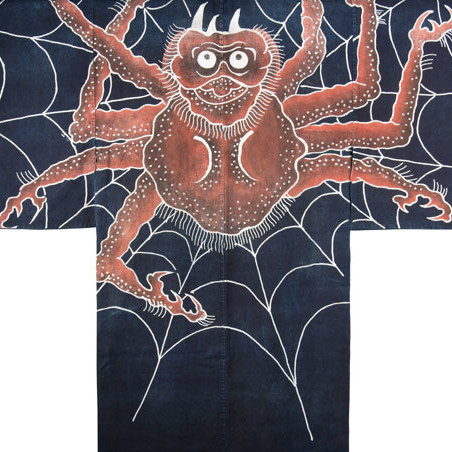
June 16, 2015 – September 13, 2015
Animals have long been a popular subject of Japanese material culture and folklore. For example, inherent in Shintō, Japan’s indigenous belief system, is the notion that divine spirits can manifest themselves as animals in addition to other animate and inanimate forms. Also, in Japanese lore, animals, both real and imagined have often been perceived in anthropomorphic terms. Because they are seen to possess certain desirable characteristics, tigers, dragons and carp have long stood as icons of virtuous behavior, while mischievous shape-shifters, such as foxes and badgers, symbolize human foibles. Indeed, in Japanese culture the ambiguity found in the complex nature of humans is often imposed on the world of creatures. While the Japanese macaque, or snow monkey, is seen as a pest that steals food, it is also venerated as a messenger of certain Shintō gods.
Early Japanese art and literature were heavily influenced by the aesthetic traditions of China and Korea. With the introduction of Buddhism to Japan in the 6th century, animal iconography and attributes took on more varied interpretations. Buddhist parables rich with exotic animals and supernatural hybrids came to be favorite subjects in Japanese art and architecture following Chinese models. The shishi, or mythological lion-dog, became a guardian figure at Shintō shrines just as it had been in palaces at China.
During the Edo period (1600 – 1868), Japan’s elite commissioned artists to create works that depicted animal subjects. Birds of prey were common. Japan’s warrior class saw itself reflected in the ability of such birds to attack swiftly and ruthlessly. Samurai kept falcons as hunting birds and as symbols of military might. They also collected paintings of hawks to decorate their impressive homes. Tigers and horses were also favorite subjects associated with warrior prowess. As seen in the present exhibition, such paintings, mounted as folding screens or as scrolls, were often created on an expansive scale.
The Japanese people have cultivated a deep consciousness and love of nature and a strong kinship to the animals around them. Even in the fast-paced, technology-driven Japan of today, the bond between human and animal continues to be explored in Japanese comics (manga) and animation (anime). The supernatural creatures of folk tradition and Shintō and Buddhist lore today take the form of nuclear-spawned mutant giant reptiles, such as Godzilla (Gojira), clever and incorrigible robots like the earless blue cat Doraemon, and the shape-shifting mechanical alien beings known as Transformers.
Funding made possible by the Henry and Tomoye Takahashi Charitable Foundation and sponsored in part by the State of Florida, Department of State, Division of Cultural Affairs and the Florida Council on Arts & Culture.